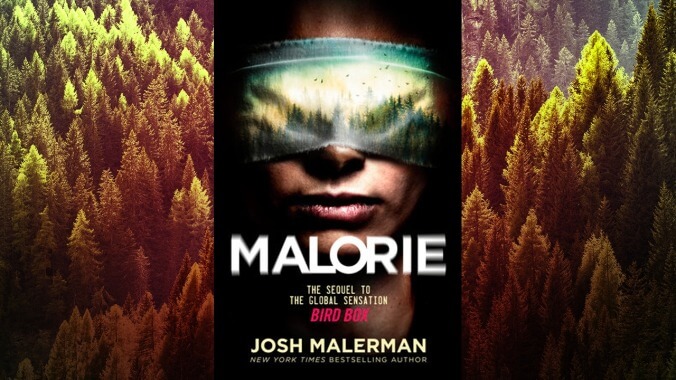Malorie will feel familiar. When Malorie recites her mantra—“Don’t get lazy”—it will feel familiar. Because Josh Malerman’s Bird Box sequel is, by and large, a story about face coverings—the people who swear by them, and those who don’t. Though written well before a pandemic swept the globe, Malorie’s depiction of a world where disruptive safety protocols have fundamentally altered old ways of life is all too timely.
Set 12 years after the events of Bird Box, Malerman’s follow-up unfolds in a world where the insanity plague—i.e., the hovering creatures who shatter the minds of those who glimpse them—has become so much a part of life that its weary populace is beginning to relax. Not Malorie, though. The Bird Box protagonist, scarred by the carnage of the first book, clings both to her blindfold and her mistrust of any and all fellow survivors. “Don’t get lazy,” she asserts, instituting hyper-cautious protocols that her 16-year-old children, Tom and Olympia, are beginning to roll their blindfolded eyes at. They’re not alone, either. Safe or not, the world is opening up again. Sheaves of paper left by a “census taker” tease a “blind train” and a community of inventors who may or may not have taken a creature hostage. This new world sounds like a dream to Tom, a budding inventor who wants nothing more than to tear off his blindfold forever, but Malorie would rather stay in place, her desire for survival eclipsing the risk that comes with venturing into the wilderness. That changes, however, when those same papers inform her that people she long thought dead are both alive and reachable.
Structurally, Malorie operates much like its predecessor, oscillating between its makeshift communities and the blind, perilous journeys that bridge them. Having now established the world’s new rules, though, Malerman is able to broaden the narrative and take us beyond the realm of mere survival, with the rebellious perspectives of Tom and Olympia—who don’t know a world without the creatures—bringing a curiosity that mirrors that of the reader. How does a “blind train” run? What’s special about the people who can see the creatures without going mad? And how does one catch something that exists beyond the realm of human comprehension?
That Malorie doesn’t want these answers is both consistent with her arc and a total drag—resisting a story’s natural momentum inevitably results in redundancy, especially for a story’s ostensible protagonist. But it’s an essential perspective in a world where concepts of “good and bad” have been recategorized as “safe and unsafe,” where one’s fierce mandates to wear a blindfold inevitably lead to people choosing not to. In this sense, Malorie captures the culture of paranoia and distrust that’s sprung up in the first half of 2020, be it a pervading fear that you’ll get infected next or a conspiratorial belief that the plague is nothing more than a hoax. Both sides exist in Malorie, with Tom, a teen who’s “tired of being told he’s supposed to be scared,” strung between the two poles. It’s his journey that helps Malorie transcend its predecessor.
But, for all its compelling questions and rich perspectives, Malorie still suffers some from Malerman’s leaden prose, which only really springs to life when a creature lurks just beyond the cloth—the author’s talent for capturing the eerie, ephemeral weight of knowing you’re not alone remains a highlight. The nature of the infected madness, on the other hand, is still ambiguous to the point of frustration. That the majority of those infected would instantly succumb to homicidal/suicidal impulses is horrifying on its surface, but somewhat pat in the grand scheme; the malleability of madness is an under-explored facet of the franchise thus far. There’s a similar facileness at work in a late-stage twist that, while satisfying for fans of the original, shrinks the world in a story that’s strongest when it’s expanding.
The world of Malorie is more interesting than the characters that inhabit it, which bodes well should Malerman embrace the franchise potential of Bird Box. That Malorie is called “A Bird Box Novel” on its spine makes it seem likely he is (an understandable choice when you factor in that Netflix cash), as does the fact that the book ends just as it unlocks an entire new setting brimming with potential. That there are so many paths forward in this world is a hopeful thought, even if the book’s reminder that there’s no returning to “normal” hits differently in our current circumstances. The masks aren’t coming off anytime soon.









































